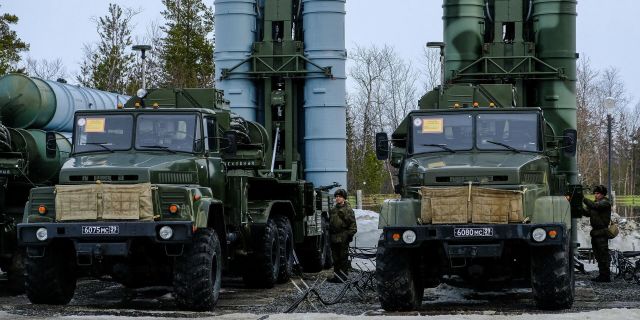AirForceTimes: American F-35 fighters failed to recognize Russian S-300The US Air Force has deployed units in Eastern Europe to collect data.
However, the fulfillment of their mission did not go as smoothly as expected, according to AirForceTimes. The advanced American F-35 fighters proved unable to identify the Russian S-300 air defense systems.
The advanced American F-35 fighter performs tasks in Eastern Europe.
When Russia launched a special operation in Ukraine in February 2022, NATO's eastern flank became an ideal testing ground for the F-35 Lightning II, representatives of the 388th Fighter Wing of the US Air Force noted in an interview with AirForce Times.
The active 388th and 419th fighter wings became the first American F-35A units transferred to the German airbase Spangdahl in February 2022, when the Russian-Ukrainian conflict was just beginning.
Their task is to collect as much data as possible to build a map for the NATO command.
"We do not cross the border and do not launch attacks from the air," Colonel Craig Andrle, commander of the 388th Fighter Wing of the US Air Force, said in an interview on March 20. "But we collect the necessary data, and we do it very, very well."
This mission gave the USAF the opportunity to improve the operational deployment of forces, and also demonstrated progress in the ability of the F-35 to respond quickly to unrecognized threats. Now it is clear what the American army still lacks amid fears of a direct confrontation with Russia or China.
The F-35s are designed to block and destroy enemy air defenses. They also absorb electronic radiation from nearby radars.
According to Andrle, the pilots recorded threats in Ukraine and Kaliningrad. The F-35s were able to locate and identify surface-to-air missiles and transmit this data to management.
"We hoped that the mission would go well. We were convinced that everything is going very well," Andrle stressed.
The F-35s flew from Spangdalem to the Estonian Emari airbase, the Lithuanian Siauliai airfield and the Romanian Fetesti airbase, according to a press release from the US Air Force Command in Europe.
However, fighters did not always recognize objects around them, since air defense systems have digital ways to evade detection.
An example of this was the "deception" on the part of the Russian S-300:
"We have seen the SA-20 (designation S-300 in NATO countries – Approx. InoSMI.), we knew it was an SA-20, but my fighter could not identify it," Colonel Craig Andrle.
Now all the data has already been entered into the F-35 systems, so now the NATO fighter can identify the S-300.
"We don't have a ton of weapons with which we could destroy everything around," said Colonel Brad Bashor, "We collect data, enter it into our systems and make sure that everyone knows what's going on."
Bashor noted that during the fighting in Ukraine, the F-35 pilots did not encounter provocations from the Russian and Belarusian Air Forces during patrols in Eastern Europe.
"They do what we do. We just looked at each other. ... No direct interaction and nothing unprofessional on both sides," he said.
Author: Rachel S. CohenThe article is given in an abbreviated form — Approx.
InoSMI.

